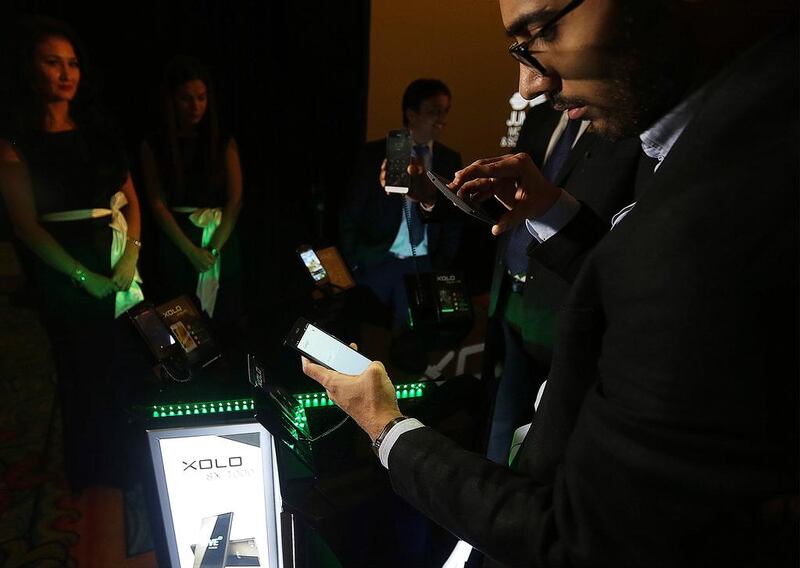While much of the world focuses on a slew of high-end smartphone launches, a barrage of new companies from Asia are muscling into the UAE's mobile market. Manufacturers such as India's Lava and China's Hisense are going for the low- to mid-tier smartphone segment, and it is in this space that they are making headway and eating into the share of Samsung and Nokia.
In fact, Samsung’s share of Mena smartphone sales declined 10 per cent at the beginning of the year to just under 50 per cent, according to the International Data Corporation (IDC). Meanwhile, China’s Huawei increased its market share by 5 per cent to take 7 per cent of the overall market, and it is continuing to expand.
Retailers in the region are increasingly beginning to stock phones not just from better-known names such as Huawei and Lenovo – which yesterday – launched its Vibe line up in Dubai – but from the lesser-known brands such as Russia’s YotaPhone and Lava’s Xolo range, both released by Jumbo Electronics.
“Our strategy is to look at products that are different. The smartphone market is getting very, very crowded and a lot of products are coming in,” said Ajay Pathak, the head of mobility and solutions at Jumbo Electronics. “UAE consumers are experimental and are looking at more value and more features.”
Lava is India’s second-largest mobile manufacturer, and the company has partnered up with Jumbo Electronics to bring its range of mid- to high-grade smartphones to the GCC. The company’s unique selling point is the different user interfaces that customers can choose from.
“It is what the customer demands. Everybody buys stock Android phones and personalises them. They want more personalisation on the market,” said Krishan Kalra, the business head for the Middle East at Lava.
Other retailers in the region are also making space on their shelves for the lesser known brands.
“We’re selling a few different ones,” said Omar Kassim, the founder of the online retailer JadoPado. “There’s growing demand for them, it depends on local tastes and the marketing activity taking place. Lenovo and Huawei are definitely doing well, but the other devices are a bit of an acquired taste.”
Ashish Panjabi, the chief operating officer at Jacky’s Electronics said: “Some of them stay in the market longer and some disappear. There are customers who experiment and like to try new phones, but that hasn’t hit the mass market yet.”
Many run on Android’s operating system, whose share in the Middle East grew to 43 per cent in the second quarter of this year from 28 per cent in the second quarter of last year.
“There has been an influx of lower-price smartphones that have many of the benefits of the higher-end brands. It really is the price point that is leading their growth. Every other month a new brand comes in and with such a low price, it is really having an effect on the market,” said Nabila Popal, the research manger for handsets and display solutions at IDC.
Sales of smartphones worth US$150 and below more than doubled in the first quarter of this year to account for 17 per cent of total sales.
thamid@thenational.ae
Follow The National's Business section on Twitter





